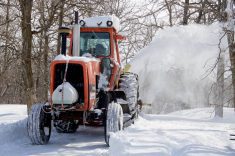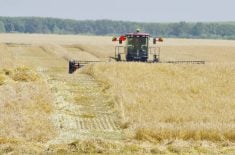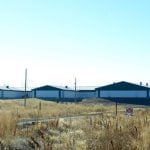Overview
The crop year for Manitoba farmers begins with extremely challenging spring conditions, moving from a very dry 2021 to high overwinter snowfall accumulation followed by a very wet April. Overland flooding has impacted major transportation routes, delaying shipment of ag commodities and inputs. Soils have been left saturated across much of agro-Manitoba, with regularly rains rewetting soils. Seeding operations have been very limited. Standing water is common in fields across Manitoba. A few scattered fields were planted in the Brandon to Rivers area last weekend. Overnight freezing temperatures continued in all regions, with daytime highs reaching the low 20’s.
Cereals
Read Also

Local farm businesses, groups look forward to Manitoba Ag Days 2026
Most of agriculture is seemingly at Manitoba Ag Days each January: Manitoba agribusinesses and farm groups look forward to connecting with farmers at the 2026 show.
Survivability concerns have increased for winter cereal fields that were (and may remain) flooded, while others on better-drained land have dehardened and are starting to green up.
Fall-banded fertilizer should remain in fields without significant loss, while high residual nitrates, unused by drought-affected 2021 crops is more susceptible to denitrification under warm and wet soil conditions.
High fertilizer and fuel prices are adding to budgetary stress on 2022 crops. Concerns about pre-selling crop with a delayed seeding start and volatile prices has farmers attempting to secure supplies.
Farmers remain extremely concerned about seeding delays, and hope to begin as conditions allow and are beginning to consider switching out of longer-season corn hybrids to a shorter CHU hybrid, as mid-May approaches, or moving to CWRS wheat or canola.
Very few spring cereal crops have been planted, mostly in the Southwest region near Brandon.
Conditions were generally favourable for grasshoppers during the egg laying period last August and September. All pest species of grasshoppers are still in the egg stage, which is quite tolerant to excess moisture. Early juvenile stages are most susceptible to excess moisture.
Recent flooding of ditches and field edges is not expected to result in significant grasshopper mortality. The cool conditions the eggs have been exposed to could delay hatch, with hatch starting near the beginning of June in many areas, and peaking towards mid- or later June.
Oilseeds
No oilseed crops have been planted to date.
Farmers are concerned with delayed planting of long-season sunflowers, and considering switching to earlier season hybrids, or oilseed types.
Canola acres will surpass Statistics Canada estimated area originally published on April 26, as a result of multiple delays to begin seeding, and switching out of long-season crops.
Many farmers hope that flea beetle pressure will be reduced due to inhospitable spring conditions, but flea beetles mortality is uncertain. Instead, Manitoba farmers may see less flea beetle damage in canola crops that are sown into warm and moist soils, where plants emerge quickly and outgrow flea beetle feeding.
Farmers are encouraged to use traditional seeding methods for canola crops wherever possible, ensuring better seed-to-soil contact and higher likelihood of crop success; rather than moving to broadcast seeding.
Broadcast or aerial seeded canola must be incorporated via mechanical means on or before the seeding deadline, and must fully establish in order to be eligible for AgriInsurance.
Pulses
A few field pea crops have been planted in the Southwest region, and most producers are concerned about yield drops in delaying planting further.
Manitoba Agriculture cautions producers planning on reducing pea acres, that despite a later start, environmental conditions are still conducive to peas, with good yields obtained if seeded before May 31.
Warm-season dry edible beans and soybeans have not yet been planted, and may see reduced soybean acres if seeding is delayed past the third week of May.
Forages & Livestock
Forages
Limited new growth of perennial forages to date, being hampered by waterlogged soils.
Most cattle remain in feedlot or on overwinter pasture.
Nearly all regions of the province remain short on feed supplies, and remaining overwinter supplies are being stretched thin by delaying cattle turn-out to pasture with wet conditions and limited to no new growth.
Low-lying pastures were flooded in Central, Interlake, and Eastern regions, while the Southwest and Northwest regions are seeing most pastures with adequate moisture recharge, with smaller amounts in a surplus/flooded position.
Livestock Water Supply
Nearly all creeks, streams, dugouts, and sloughs have refilled to capacity in agro-Manitoba due to above-normal snowfall and melt, together with consecutive Colorado Low systems bringing rain to nearly all parts of Manitoba.
Regional Comments
Southwest
Sub-zero lows throughout the region kept soils cool, and did not encourage soil drying. Snowbanks persist in tree rows, despite substantial rain yesterday, ranging from 25 to 50mm. Rain has delayed seeding operations another week, with some exceptions in the Hamiota to Russell area. Ditches, sloughs, and creeks are full. Seeding completion is less than 2 per cent done across the region.
Northwest
Southern parts of the region received snowfall with the most recent storm, and contributed to seeding delays. Low-lying areas remain saturated. A limited start to fieldwork/fertilizer application began in the Swan River and Roblin districts, but has been stalled by Monday’s rain. A few weeds have emerged with recent warmer temperatures. Winter cereals are in good condition. Seeding operations could begin later this week.
Central
Overland flooding and municipal road damage was widespread in the Red River Valley and parts of the region west of the Escarpment. No fieldwork has occurred, and fields remain soft. Fields with zero- or minimal-till last fall are allowing better infiltration of water than conventionally tilled ground, and will support seeding first.
Eastern
Varying rainfall amounts fell on Monday, but all parts of the region remain very wet, generally receiving 12 to 25 mm, with some isolated downpours. Overland flooding and full waterways continue to be a concern, and no field operations have begun. Seeding is expected to be delayed until Victoria Day weekend. Livestock producers are expecting lower pasture productivity due to degraded condition from last year, and the planned early release of cattle onto grazing pasture given the lack of available feed.
Interlake
Substantial snowmelt and heavy April rainfall amounts have left water levels high across the region, leaving many fields and pastures saturated, and overland flooding widespread in both the south and north Interlake. Heavy, wet snow damaged fencelines, together with flowing water, and snowbanks remain in shelterbelts. No crops have been seeded, and field access remains very difficult. Cattle remain in feedlots or overwinter pastures on higher ground.
To read the complete Manitoba Crop Report for May 10, click here.















